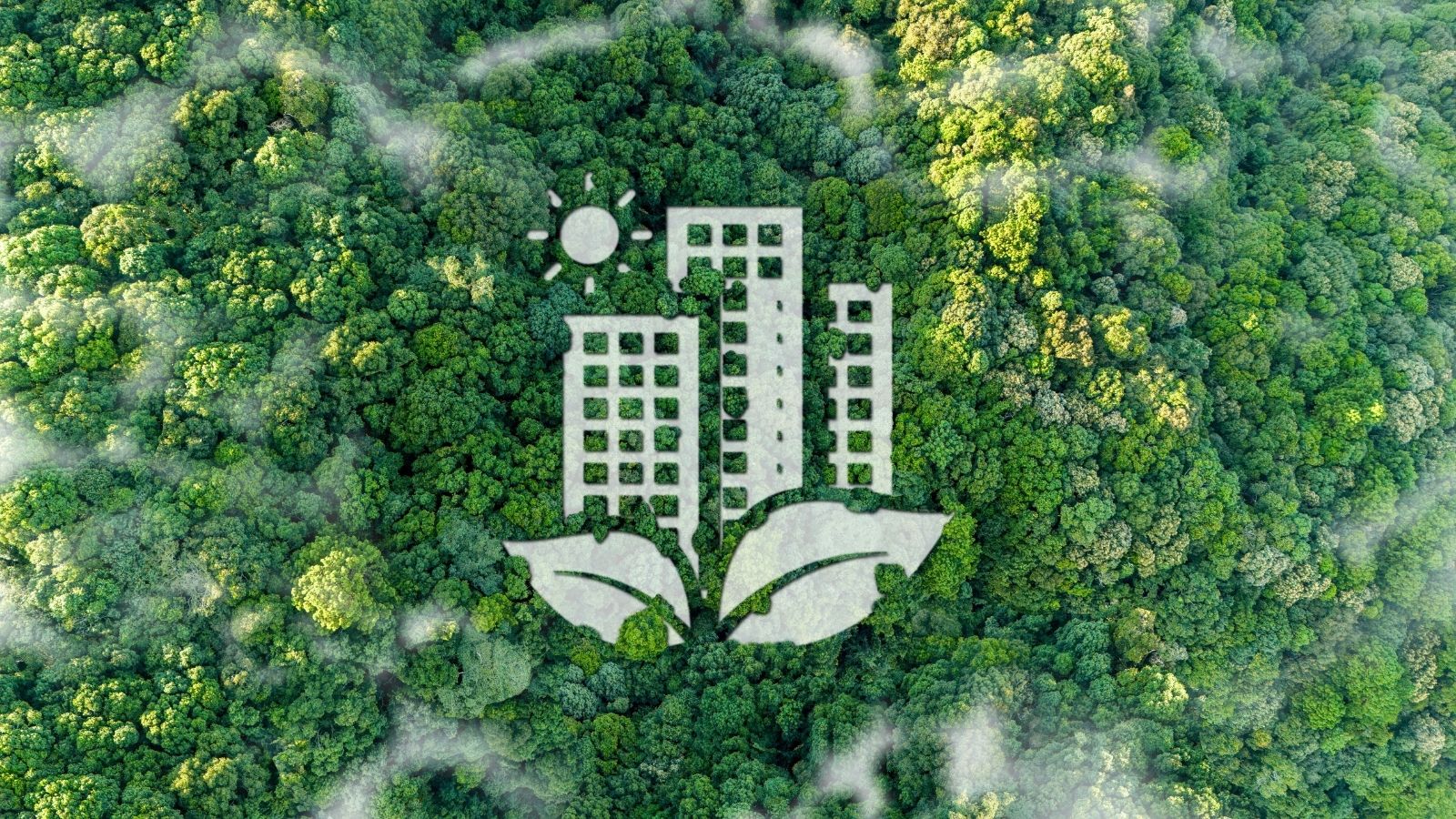Canada is quietly making strides in environmental innovation, pushing boundaries in sustainability and eco-conscious living. While challenges persist, the country has taken meaningful steps in clean tech, renewable energy, conservation, and circular economies. Across provinces, businesses, communities, and governments are working together to create greener solutions. This list highlights 25 of the many ways Canada is contributing to a more sustainable future without making sweeping claims, just real efforts in action.
Investing in Clean Technology Startups

Canada is home to a growing number of clean tech startups focused on solving environmental problems. From carbon capture to energy-efficient manufacturing, these ventures are gaining momentum with government and private support. The Sustainable Development Technology Canada fund is one such effort that is fueling innovation. These startups not only create jobs but also provide eco-friendly solutions for industries. It’s a step toward a greener, tech-driven economy.
Expanding Wind Energy Projects
 Wind power has become a key part of Canada’s renewable energy portfolio. Provinces like Ontario, Alberta, and Nova Scotia have significantly increased their wind capacity in recent years. These projects provide low-emission alternatives to fossil fuels while supporting rural communities. The industry also contributes to jobs in manufacturing, installation, and maintenance. While not perfect, wind energy continues to grow steadily across the country.
Wind power has become a key part of Canada’s renewable energy portfolio. Provinces like Ontario, Alberta, and Nova Scotia have significantly increased their wind capacity in recent years. These projects provide low-emission alternatives to fossil fuels while supporting rural communities. The industry also contributes to jobs in manufacturing, installation, and maintenance. While not perfect, wind energy continues to grow steadily across the country.
Electrifying Public Transit

Cities like Vancouver, Montreal, and Toronto are investing in electric buses and rail systems to reduce transportation emissions. This shift not only helps cut down air pollution but also offers a smoother and quieter commuter experience. Charging infrastructure is being added gradually to support this change. Public transit authorities are also exploring green fuels and hybrid models. It’s part of a broader goal to modernize urban mobility.
Protecting Natural Carbon Sinks

Canada’s vast forests, wetlands, and grasslands act as major carbon sinks. Government programs now aim to preserve and restore these ecosystems as part of climate mitigation. Restoration projects include replanting native species and managing wildfire risks. These efforts help maintain biodiversity while supporting Indigenous conservation leadership. It’s an important step in natural climate solutions.
Advancing Green Building Standards

The country is updating building codes to encourage energy-efficient design and construction. LEED-certified buildings and net-zero homes are becoming more common across urban and suburban areas. These structures reduce energy use, lower costs, and offer healthier indoor environments. Builders are also adopting green materials and water-saving systems. While it’s a long-term shift, the construction industry is moving toward sustainability.
Developing Low-Carbon Agriculture

Canadian farmers are exploring regenerative practices like cover cropping, reduced tillage, and precision agriculture. These techniques help cut emissions and build healthier soils. Agri-tech innovations like climate-smart sensors are also being introduced. Government programs are encouraging sustainable transitions through funding and training. It’s a key step in reducing agriculture’s environmental impact.
Supporting Green Infrastructure Projects

Green infrastructure includes things like rain gardens, green roofs, and permeable pavements that help manage stormwater and reduce urban heat. Cities like Toronto and Calgary are piloting these projects in high-density areas. These features not only look appealing but also serve vital environmental functions. They reduce pressure on municipal systems and promote resilience. Such infrastructure blends form with function in modern urban planning.
Creating Circular Economy Initiatives

From clothing reuse to industrial recycling, Canadian businesses and municipalities are promoting circular systems. Rather than sending materials to landfills, efforts focus on reuse, repair, and repurposing. Some cities are experimenting with zero-waste pilot programs and repair cafés. The shift also opens opportunities for small businesses in upcycling and eco-manufacturing. While early, these models are gaining interest across sectors.
Expanding Solar Energy Adoption

More homeowners and businesses are turning to rooftop solar installations to reduce grid reliance. Alberta and Saskatchewan have seen growth in small-scale solar, thanks to more sun exposure and changing regulations. Municipalities are also adding solar to public buildings and schools. While solar contribution to the national grid is still modest, its upward trend is promising. Accessibility and affordability continue to improve.
Reducing Single-Use Plastics

Canada has introduced policies to phase out common single-use plastics like straws, bags, and cutlery. Retailers and restaurants are adjusting operations to accommodate reusable and biodegradable alternatives. Public education campaigns are helping shift consumer behavior toward more sustainable habits. While implementation varies by region, the overall direction is clear. It’s one of many efforts to reduce ocean and landfill waste.
Fostering Indigenous-Led Environmental Projects

Indigenous communities are leading innovative conservation and sustainability efforts across the country. From clean energy to land stewardship, these projects honor traditional knowledge while embracing new technology. Co-managed protected areas and cultural fire programs are examples of this approach. These efforts often balance environmental goals with cultural preservation. It’s a collaborative path forward rooted in respect and reciprocity.
Advancing Carbon Pricing Mechanisms

Canada has implemented carbon pricing frameworks to encourage emissions reductions. Though policies differ across provinces, the national carbon pricing system sets a baseline. This approach aims to make polluting activities less economically attractive over time. Revenues are often returned to households or used to fund clean energy initiatives. While debated, the system is a major component of Canada’s climate strategy.
Growing the Green Finance Sector

Financial institutions are increasing support for ESG (Environmental, Social, and Governance) investing. Green bonds, sustainability-linked loans, and climate risk disclosures are becoming more common. This shift is steering capital toward environmentally responsible businesses. Regulations are being adapted to promote transparency and accountability in finance. It’s helping to align money with climate goals.
Encouraging Low-Emission Transportation

From incentives for electric vehicles (EVs) to investments in cycling infrastructure, Canada is pushing for cleaner transportation. EV adoption is rising, supported by rebates and expanding charging networks. Some cities are redesigning roads to accommodate bikes and pedestrians better. Reducing reliance on gas-powered vehicles also helps improve urban air quality. It’s a gradual but essential transition.
Innovating in Water Conservation

Many Canadian municipalities are adopting smart water systems to monitor usage and detect leaks. Technologies include AI-powered meters and drought-resistant landscaping. Public campaigns also promote water-wise habits among residents. This is especially critical in regions vulnerable to seasonal droughts. Clean water remains a shared resource that requires proactive management.
Revitalizing Brownfields into Green Spaces

Old industrial sites, often contaminated, are being remediated and transformed into parks, housing, or community centers. These projects bring new life to underused land while cleaning up environmental damage. Partnerships between governments and private developers are key to success. Revitalized areas improve both property values and community well-being. It is a win for both cities and the environment.
Supporting Biofuel and Biomass Research

Research institutions across Canada are exploring biofuel alternatives derived from agricultural waste, algae, and forest byproducts. These fuels could offer lower-emission options for aviation and heavy industry. Universities and startups are collaborating to make these solutions commercially viable. Pilot projects are being tested across several provinces. It’s a growing field with exciting potential.
Increasing Urban Tree Cover

Cities like Montreal, Vancouver, and Edmonton have launched initiatives to increase tree planting. Urban trees help filter air, reduce heat islands, and improve mental well-being. Community groups and schools are often involved in local planting efforts. Municipal budgets are starting to prioritize green canopy expansion. It’s a visible and long-term investment in quality of life.
Promoting Green Education and Training

Colleges and universities are expanding programs focused on sustainability, clean tech, and environmental science. These programs prepare students for green jobs and climate-conscious careers. Certifications in energy auditing, green building, and environmental law are also on the rise. Education is key to supporting the next generation of climate leaders. Investment in skills is just as crucial as tech itself.
Rewilding Urban Spaces

Rewilding brings native plants and species back into city environments, restoring ecosystems at a small scale. Urban planners are integrating pollinator gardens, native grass patches, and wildlife corridors. These changes also support biodiversity and reduce maintenance costs over time. It makes cities more livable—not just for humans, but for nature too. This quiet movement is gaining popularity nationwide.
Modernizing the Energy Grid

Canada is working to create a smarter, more resilient electrical grid that can support renewables and reduce outages. Projects focus on digital monitoring, storage solutions, and decentralized energy sources. A modern grid makes it easier to integrate wind and solar power. Utility companies are piloting smart meters and AI forecasting tools. It’s about building tomorrow’s energy system.
Encouraging Remote Work to Cut Emissions

The post-pandemic rise of remote and hybrid work is helping reduce commuter traffic and related emissions. Some companies are supporting employees with green home office incentives. Fewer cars on the road mean lower fuel consumption and cleaner urban air. Governments are also updating infrastructure to support this shift. While indirect, remote work has become part of the green puzzle.
Expanding Access to Green Spaces

Public parks, community gardens, and waterfront trails offer mental and physical health benefits. Municipalities are working to ensure equitable access to these spaces, especially in urban areas. Investment in green space supports biodiversity and community connection. New developments are often required to include natural areas in planning. It is a quiet but powerful way to build better cities.
Improving Food Waste Reduction Efforts

Programs that divert food waste from landfills are expanding across the country. This includes composting services, food rescue programs, and consumer education. Reducing food waste also lessens methane emissions and improves food system efficiency. Restaurants and grocers are also exploring tech to track waste and donate surplus. It’s a multi-layered approach with measurable impact.
Championing Youth-Led Climate Action

Young Canadians are leading powerful environmental movements, from school strikes to grassroots campaigns. Many are founding organizations, hosting events, and influencing policy at the local level. Their voices are shaping how the country approaches sustainability. Governments and NGOs are beginning to offer more support to these youth-led efforts. It’s a growing force for change, fueled by urgency and innovation.
Conclusion

Canada may not be perfect in its environmental journey, but the country is making meaningful progress in green innovation. From startups to local governments and Indigenous leadership, various players are contributing to a shared, more sustainable future. These 25 efforts show that change is possible when technology, community, and commitment come together. The green future isn’t a single destination; it is a path, and Canada is steadily walking it.
22 Times Canadian Ingenuity Left the U.S. in the Dust

When people think of innovation, they often picture Silicon Valley. However, Canada has a history of innovation, too. Whether it’s redefining sports, revolutionizing medicine, or just showing America up at its own game, Canadian inventors, thinkers, and dreamers have had their fair share of mic-drop moments. Here are 22 times Canadian ingenuity left the U.S. in the dust.
22 Times Canadian Ingenuity Left the U.S. in the Dust
